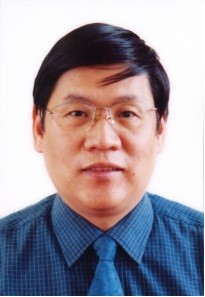-
27浏览
-
0点赞
-
0收藏
-
0分享
-
138下载
-
0评论
-
引用
期刊论文
Molecular dynamics simulation of stress corrosion cracking in Cu3Au
Computational Materials Science 25 (2002) 510-518,-0001,():
During stress corrosion cracking of Cu3Au alloy, a dealloyed layer on the surface will be formed because of preferential dissolution of Cu. Molecular dynamics (MD) simulations showed that Cu3Au crystal with a dealloyed layer on one surface and one end fixed will be deflected after prolonged relaxation because of a tensile stress generated at or near the dealloyed layer interface. The deflection and then the tensile stress increases with the depth of dealloyed layer and the vacancy concentration in the dealloyed layer. MD simulations for a single edge crack under mode I loading show that, no matter what the crack orientation is, edge dislocation is first emitted from the crack tip followed by large amounts of screw dislocations as loading proceeds, and the crack begins to extend when dislocation emission and motion reach a certain condition. The critical stress intensity for dislocation emission is decreased from KIe = 0:62 MPam1/2 with no dealloyed layer around the crack (to simulate loading in air) to K*Ie = 0:58 MPam1/2 with a dealloyed layer introduced around the crack (to simulate SCC), and the critical stress intensity for crack extending after emitting large amounts of screw dislocations is decreased from KIp = 1:14 to K*Ip = 1:0 MPam1/2 correspondingly. This indicated that a dealloyed layer-induced tensile stress can help the applied stress to enhance dislocation emission and crack extension, and results in SCC.
【免责声明】以下全部内容由[张跃]上传于[2005年01月26日 00时39分01秒],版权归原创者所有。本文仅代表作者本人观点,与本网站无关。本网站对文中陈述、观点判断保持中立,不对所包含内容的准确性、可靠性或完整性提供任何明示或暗示的保证。请读者仅作参考,并请自行承担全部责任。
本学者其他成果
同领域成果

 提示
提示

